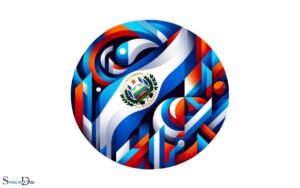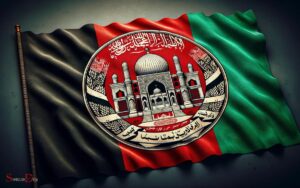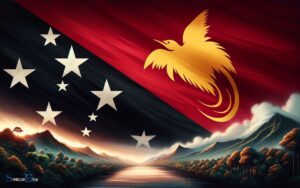What Does the Symbol on the Bolivian Flag Mean? Culture!
The Bolivian flag features a coat of arms that encapsulates the country’s diverse history, rich culture, and natural wealth. At the heart of the emblem is the Andean condor, symbolizing freedom and the nation’s high aspirations.
The coat of arms also includes Mount Potosí, representing the country’s mineral wealth; a rising sun, indicating a new era after colonialism; an alpaca, standing for the animal wealth; a bundle of wheat, symbolizing agricultural richness; and a red Phrygian cap, representing liberty.
The symbolism of the Bolivian flag’s emblem reflects various aspects of the nation’s identity:
Andean Condor: Freedom and lofty goals
Mount Potosí: Mineral resources and historical significance – Rising Sun: Independence and a bright future
Alpaca: Animal wealth and indigenous culture
Bundle of Wheat: Agricultural abundance
Red Phrygian Cap: The quest for liberty
The symbol’s evolution mirrors Bolivia’s journey through the ages, from its pre-colonial past to its aspirations for the future.
Embedded in Bolivia’s flag, the emblem stands as a beacon of national pride, weaving the story of a land that cherishes its heritage while striving toward a promising horizon.
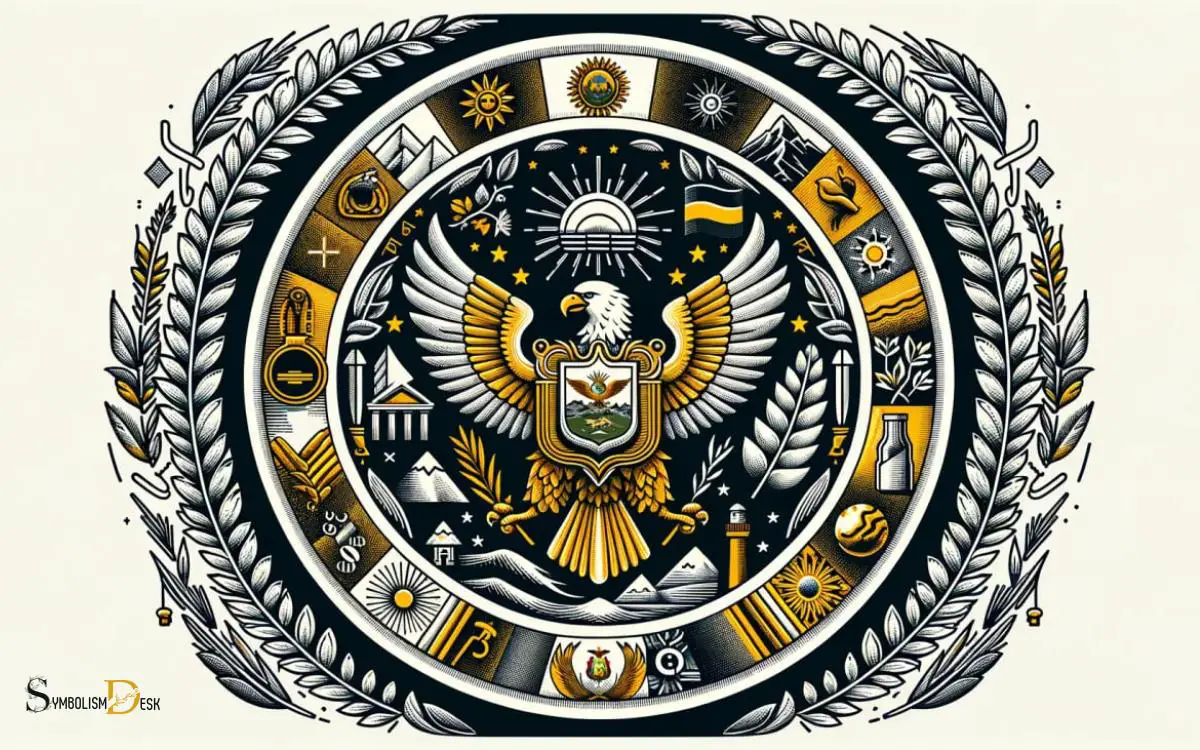
Key Takeaway
Historical Origins of the Symbol

How did the symbol on the Bolivian flag originate?
The central emblem on the Bolivian flag, a coat of arms, represents the country’s history and culture. It consists of a central cartouche flanked by the Bolivian flag and an olive crown.
Within the cartouche is a mountain Potosí, which symbolizes the country’s wealth and natural resources. The sun rising behind the mountain signifies the dawning of a new era of freedom for Bolivia.
Additionally, the llama, cinchona tree, and wheat sheaves represent the animal wealth and the country’s natural resources. These symbols are deeply rooted in Bolivia’s rich history and are a reflection of the country’s heritage and identity.
Understanding the historical origins of this symbol provides insight into Bolivia’s past and its significance in the present day.
Cultural Significance and Interpretation
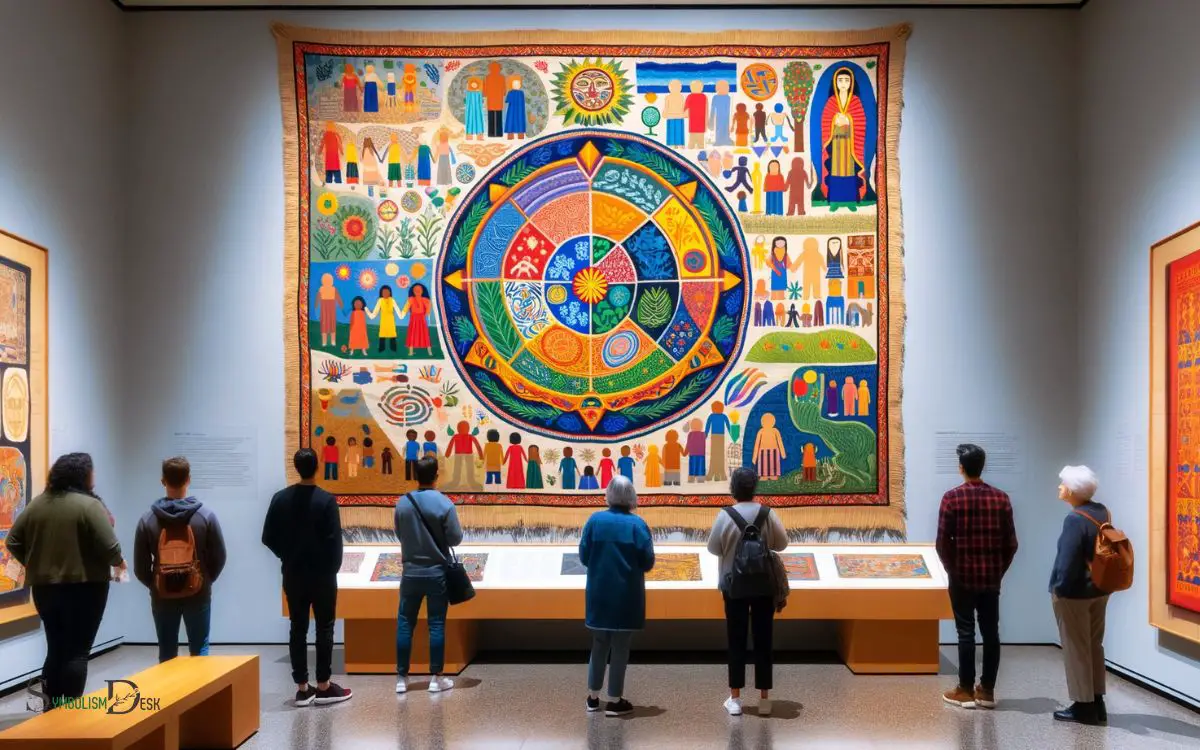
The historical origins of the central emblem on the Bolivian flag provide a foundation for understanding its cultural significance and interpretation.
The emblem, which consists of a condor, a mountain, and a rising sun, holds deep cultural and historical significance for the people of Bolivia.
- Representation of Andean Cosmology: The condor, mountain, and sun are symbolic representations of the Andean worldview and cosmology, reflecting the indigenous beliefs and traditions of the region.
- Connection to Incan Civilization: The emblem’s elements are also linked to the Incan civilization, representing the condor as a sacred bird, the mountain as a place of spiritual significance, and the sun as a symbol of life and energy.
- National Identity and Unity: The emblem serves as a unifying symbol for the diverse cultural and ethnic groups within Bolivia, fostering a sense of national identity and pride.
- Continued Cultural Relevance: Today, the emblem continues to be revered as a powerful symbol of Bolivia’s rich cultural heritage and serves as a source of inspiration for its people.
Evolution of the Symbol Over Time
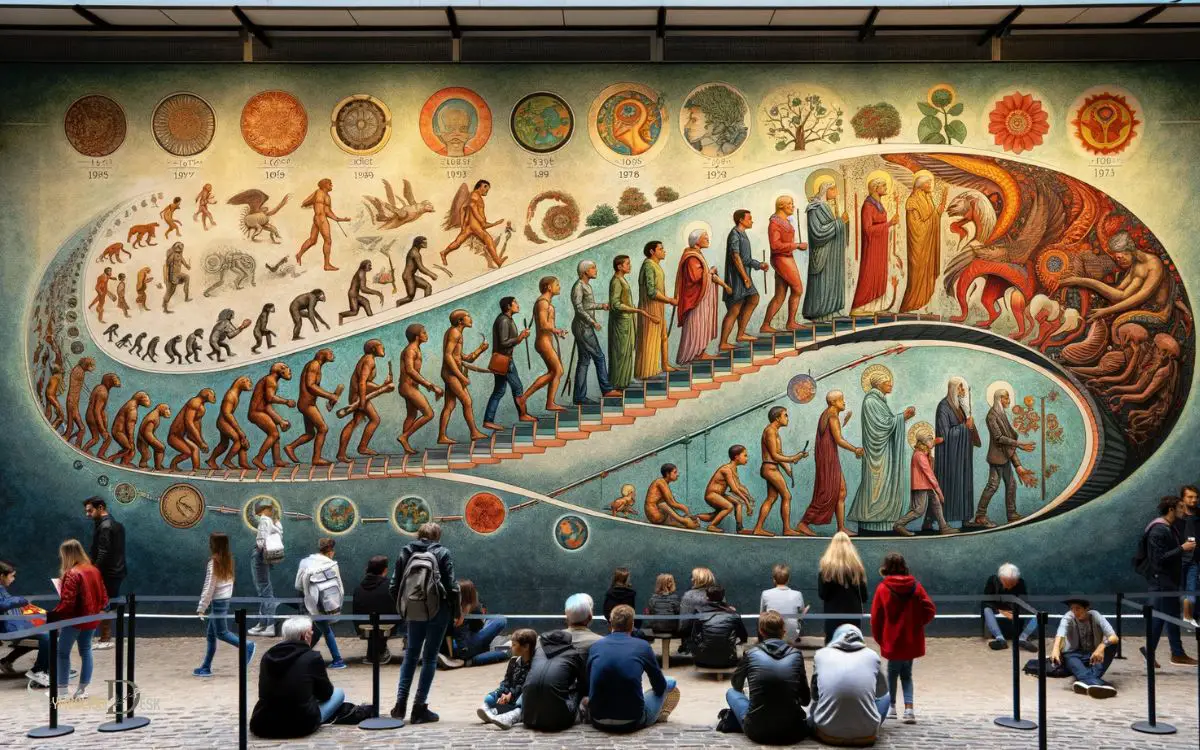
Over time, the symbol on the Bolivian flag has undergone significant evolution, reflecting changes in the country’s cultural, social, and political landscape.
The current emblem of the Bolivian flag features a central coat of arms that depicts a mountain, with the rising sun behind it, and an olive branch and a bundled pair of wheat surrounding it.
This emblem has evolved from the earlier versions of the Bolivian flag, which featured different variations of the coat of arms, including different types of wreaths and symbols.
The changes in the emblem over time have been influenced by the country’s historical events, indigenous cultures, and political shifts, each contributing to the evolving representation of Bolivia’s national identity.
This evolution serves as a visual reflection of the nation’s complex history and its ongoing development.
Symbolism in Bolivian Society and Politics
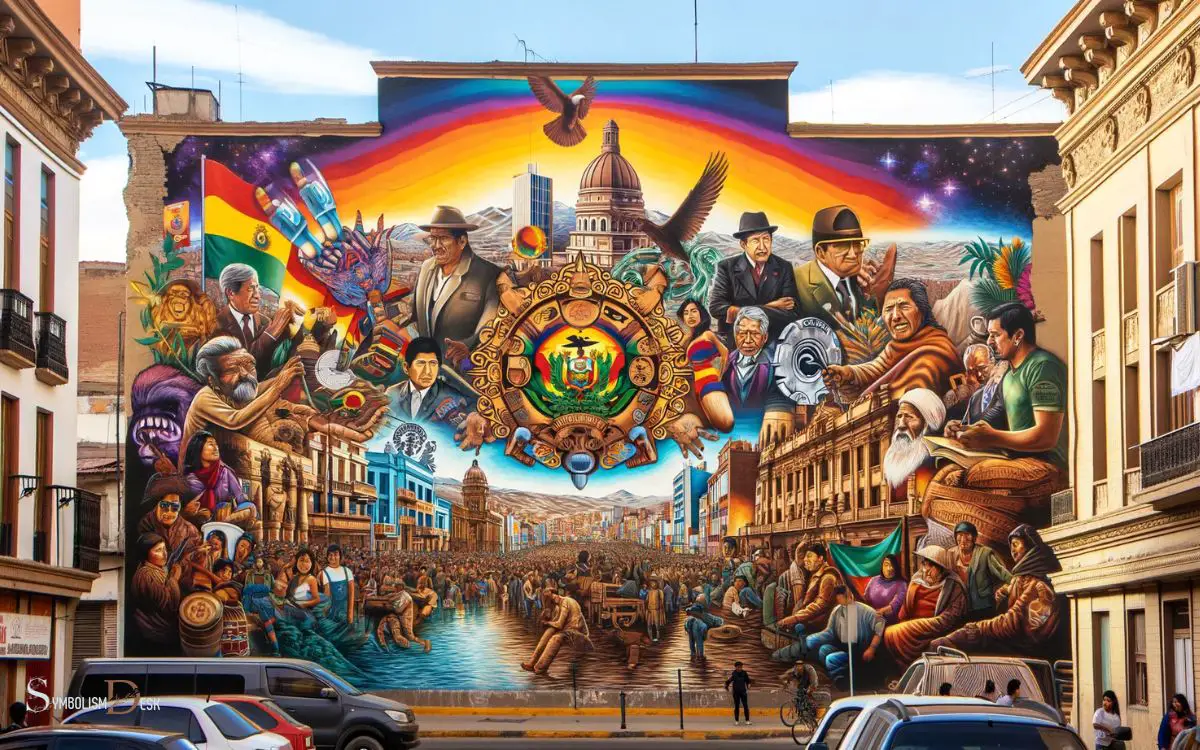
Symbolism plays a pivotal role in Bolivian society and politics, as the emblem on the Bolivian flag is deeply intertwined with the country’s historical narratives and contemporary aspirations.
This symbolism is reflected in various aspects of Bolivian society and politics:
- Indigenous Heritage: The flag’s emblem represents the indigenous cultures that form an integral part of Bolivian society, emphasizing the importance of indigenous identity and traditions.
- Struggle for Independence: The flag’s colors and symbols represent the country’s fight for liberation from Spanish colonial rule, serving as a constant reminder of Bolivia’s hard-won freedom.
- Political Ideologies: Different political factions in Bolivia often use the flag’s symbolism to represent their ideologies, leading to its use as a political symbol.
- National Unity: The flag serves as a unifying symbol, representing Bolivia’s diverse ethnic groups and fostering a sense of national unity.
What Do the Symbols on the Peru Flag Mean Compared to the Symbol on the Bolivian Flag?
The peru flag symbols meaning differ from those on the Bolivian flag. On the Peru flag, the coat of arms features a vicuña, which represents the wildlife of Peru, and a cinchona tree, symbolizing the country’s natural resources. However, the Bolivian flag carries only one symbol, the coat of arms with a condor holding a laurel crown, signifying freedom and liberty.
What is the Cultural Significance of the Symbol on the Bolivian Flag?
The symbol on the Bolivian flag holds deep cultural significance and reflects the country’s heritage. However, it is important to note that the keyword “symbol on Guatemalan flag meaning” does not relate directly to the Bolivian flag. Each country has its own unique symbolism, and understanding the historical context behind these symbols is crucial to appreciating their cultural importance.
The Symbol’s Impact on National Identity
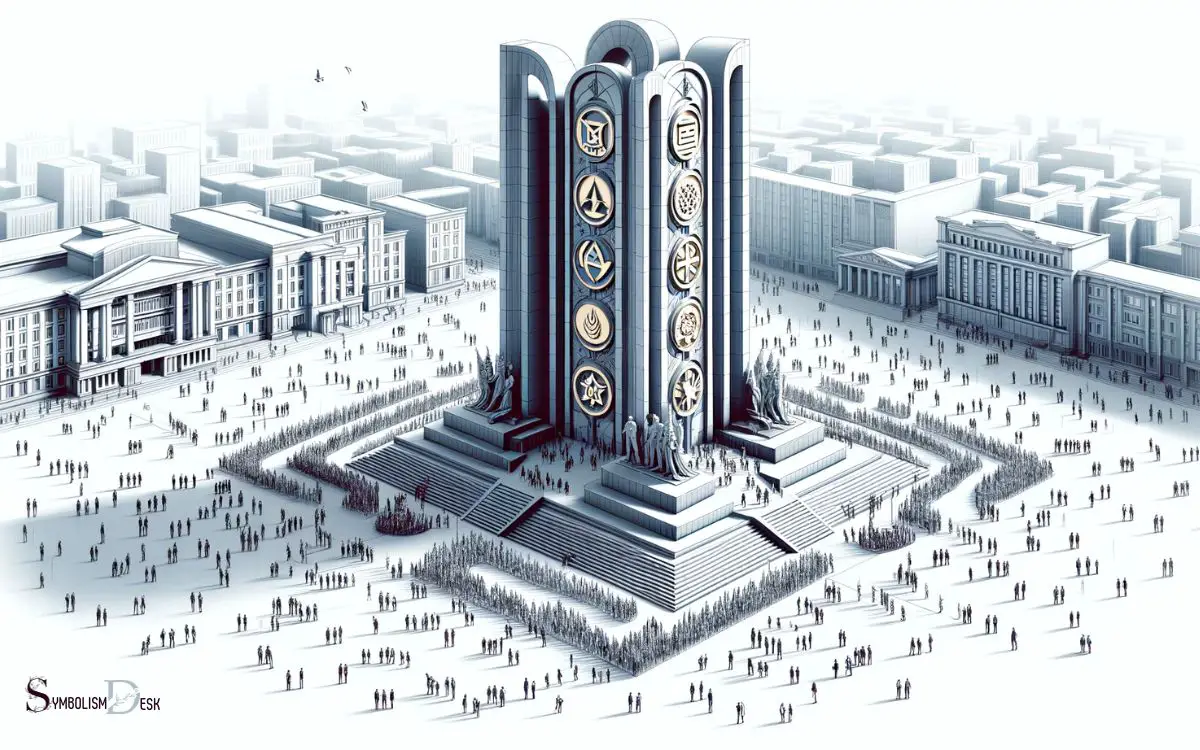
Representing the diverse cultural heritage of Bolivia, the symbol on the Bolivian flag has had a profound impact on shaping the nation’s collective identity.
The emblem, with its depiction of the Andean condor, the Bolivian national animal, and the native Bolivian symbol of the Chakana or Andean Cross, serves as a visual representation of Bolivia’s indigenous roots and its connection to the land.
This powerful imagery has played a significant role in fostering a sense of unity and pride among Bolivians, regardless of their individual backgrounds.
The symbol’s presence in national emblems, currency, and government buildings constantly reinforces its importance in the daily lives of Bolivians, further solidifying its impact on national identity.
| Symbol | Impact on National Identity |
|---|---|
| Andean condor | Represents freedom, power, and the country’s connection to the land |
| Chakana (Andean Cross) | Symbolizes Bolivia’s indigenous heritage and the concept of living in harmony with nature |
| Presence in national emblems, currency, and government buildings | Constant reinforcement of the symbol’s importance in shaping the collective identity of Bolivians |
Conclusion
In conclusion, the symbol on the Bolivian flag has deep historical and cultural significance. It has evolved over time to become an important element of national identity and politics in Bolivian society. The red, yellow, and green colors of the flag represent the blood shed for independence, the wealth of the country, and the lush vegetation, respectively. The crest in the center features a condor, a llama, and a green wreath symbolizing liberty, the importance of work, and the desire for peace. This unique combination of symbols reflects the diverse natural and cultural heritage of Bolivia and serves as a powerful representation of the nation’s values and aspirations. Mexican flag culture explained.
Its origins and interpretation have shaped its impact on the country. It continues to serve as a powerful representation of Bolivia’s rich history and heritage.


